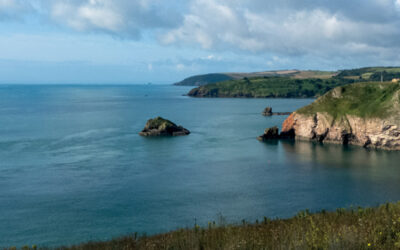
Article
Free Royal Mail 48 postage on UK orders. European postage is £3.50 per item. Worldwide postage is £5.50 per item. If you're not happy with your purchase for any reason, we'll give you a full refund.
More information...
Guidebook describing a 9-stage (119km) route around the Piz Bernina massif in the Alps on the Swiss-Italian border near St Moritz, and the 8-stage (94km) Alta Via Valmalenco exploring the Valmalenco valley, in the shadow of Monte Disgrazia. The Tour of the Bernina is suitable for first-time trekkers but the Alta Via needs some experience.
Free Royal Mail 48 postage on UK orders. European postage is £3.50 per item. Worldwide postage is £5.50 per item. If you're not happy with your purchase for any reason, we'll give you a full refund.
More information...
A guidebook to two trekking routes in the Swiss and Italian Alps. The Tour of the Bernina, a circular route around Piz Bernina covering 119km (74 miles), is suitable for trekkers of all experience levels and can be completed in 9 days. The Alta Via Valmalenco, a circular route in the shadow of Monte Disgrazia covering 94km (58 miles), is suitable for trekkers with some Alpine trekking experience and can be completed in 8 days.
The Tour of the Bernina is presented anti-clockwise in 9 stages, each between 7 and 19km (4–12 miles) in length, whilst the Alta Via Valmalenco is presented clockwise in 8 stages of 8–14km (5–9 miles) in length. Several extensions and detours are also included allowing the route to be adapted.
Getting there and map key
Route summary tables
Overview map
Introduction
The Tour of the Bernina
The Alta Via Valmalenco
About glaciers
Plants and flowers
Wildlife
Getting there
Getting around
Tourist information
When to go
Accommodation
Food and drink
What to take
Waymarking and maps
Dos and don’ts
Emergencies
Using this guide
The Tour of the Bernina
Stage 1 Pontresina to Fuorcla Surlej
Stage 2 Fuorcla Surlej to Maloja
Stage 3 Maloja to Rifugio Longoni
Stage 3A Maloja to Chiareggio
Stage 3B Chiareggio to Rifugio Longoni
Stage 4 Rifugio Longoni to Lago Palù
Stage 5 Lago Palù to Rifugio Carate Brianza
Stage 6 Rifugio Carate Brianza to Rifugio Bignami
Stage 7 Rifugio Bignami to Cavaglia
Stage 7A Rifugio Bignami to Selva
Stage 7B Selva to Cavaglia
Stage 8 Cavaglia to Berghaus Diavolezza
Stage 8A Cavaglia to Ospizio Bernina
Stage 8B Ospizio Bernina to Berghaus Diavolezza
Stage 9 Berghaus Diavolezza to Pontresina
The Alta Via Valmalenco
Stage 1 Torre di Santa Maria to Rifugio Bosio Galli
Stage 2 Rifugio Bosio Galli to Rifugio Ventina/Rifugio Gerli-Porro
Stage 3 Rifugio Ventina/Rifugio Gerli-Porro to Chiareggio
Stage 4 Chiareggio to Lago Palù
Stage 5 Lago Palù to Rifugio Marinelli Bombardieri
Stage 6 Rifugio Marinelli Bombardieri to Rifugio Bignami
Stage 7 Rifugio Bignami to Rifugio Cristina
Stage 8 Rifugio Cristina to Caspoggio
Appendix A Glossary
Appendix B Accommodation
May 2023
Stage 1: Rifugio Fuorcla Surlej is not currently offering accommodation
(thanks to Frank Browning)
Chamanna Coaz is closed in 2023 for refurbishment.
March 2022
Rifugio Cavaglia is currently closed. Walkers can either press on to Agriturismo Alpe Palu (approx 1hr) or catch a train on to Alp Grum.
March 2022
The hut at Fuorcla Surlej will be closed for renovations throughout 2022.
September 2016
end of Stage 1 Fuorcla Surlej has accommodation from mid-July to end August. NB Reservation essential!
Stage 7A descent should be 1300m
Tour of the Bernina
Stage 2- Val Fex to Isola variant
The upper part of the descent path from Marmore towards Curtins has been closed because of a rockfall.
As a result instead of 'Keep R at the junction' take the official diverted path L of the junction which goes slightly higher above and parallel to the original route and then descends to rejoin it further along. Path is shown on the Kompass map.
Alta Via Della Valmalenco
Stage 1
Rifugio Cometti Grandi is closed for the time being
Stage 2
Rifugio Gerli-Porlo is CAI
Stage 3
Suggestion: Stay at Rifugio Tartaglione Crispo so that you can complete the high level loop via Rifugio del Grande Camerini pack-free.
Stage 4
The popular Rifugio Lagu Palu may be pre-booked by large groups at weekends. Excellent alternative accommodation is available at Rifugio Motta on the opposite side of the lake. Allow one hour to walk to it. Tel 0342451406 or cell 3403368496
(Thanks to David Hasell and Gustav Dobrzynski)
Bernina Tour, Stage 1: the rifugio at Fuorcla Surlej is reportedly no longer offering accommodation
(Thanks to John Atherton)
Appendix B
The Tour of the Bernina
Stage 2
Hotel Silserhof is in Sils Maria
Sporthotel and Chesa Alpina are in Maloja
Stage 3
Hotel Genziana and Hotel Chiareggio are in Chiareggio
Stage 5
Fior di Roccia and Edelweiss are in Franscia
The Alta Via Valmalenco
Stage 8
Hotels: Fior di Monte is at Caspoggio while Chalet Rezia and Miravalle are at Chiesa in Valmalenco.
NB please remove 'CAS, open etc' from last two hotel listings.
Gillian Price has trekked throughout Asia and the Himalayas, but now lives in Venice. Gillian has steadily explored the mountain ranges of Italy, and Corsica, and brought them to life for visitors in a series of outstanding guides for Cicerone. She is an active member of the Italian Alpine Club (CAI) and Mountain Wilderness.
View author profile